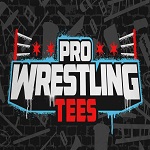Wrestling is a Metaphor for Life – Hulkamania vs. the Million Dollar Man

by @Ite Lemalu
As a young wrestling fan, I picked up some interesting knowledge I had yet to learn about in primary school; such as the names of American cities and states: As a formality before the matches, the ring announcer would introduce the wrestlers names, weight and their hometown (and country, depending on nationality). I also gained a valuable understating of music from how it was utilized in wrestling’s live atmosphere; from my own observation, music in wrestling triggered a fan’s reaction and immediately changed the mood of the crowd as soon as the sound played over the arena. During the 1980s, the WWF took advantage of this tool by giving most of their top wrestling stars customized entrance music to complement their characters. These themes provided the soundtrack to a wrestler’s story as they walked to the ring, and these songs also served as an introduction to a person that would be watching wrestling for the first time. In addition to learning about geographical locations and music, I also learned about the different forms of good and evil on top of what was already taught to me at home and in Sunday school. Pro wrestling has often taught fans lessons about life on the basis of good vs. evil, and right and wrong; in fact, pro wrestling is crucially dependent on physical and philosophical conflict; most of these are taken from real life situations, thus inspiring the title of this article; ‘Wrestling is a Metaphor for Life’. In this piece, I will discuss wrestling’s benchmark of the hero vs. villain formula, ‘Hulkamania vs. the Million Dollar Man’.
Hulk Hogan; the face of 1980s WWE, and to a greater degree, a pop culture icon. Hulk Hogan was the ultimate protagonist, the defender of all good. Although his theme music titled, ‘Real American’ should have confined Hulk’s popularity exclusively to the American audience, Hogan’s appeal instead broke barriers beyond the American market. Hulk Hogan was the leader of Hulkamania; a brand to the WWE, but in Hogan’s definition, Hulkamania was a way of life. Hogan referred to his fan base as his ‘Hulkamaniacs’, and since the start of his WWE championship reign in 1984, Hulk preached the same message of encouragement to his Hulkamaniacs “Train, say your prayers, and take your vitamins”. This message also coincided with the ‘Just Say No’ anti-drugs advertising campaign that was created by Barbra Bush the First Lady of the United States. Prior to the Million Dollar Man’s arrival to the WWE, Hulk Hogan’s reign was described as dominant; fending off challenges from worthy adversary’s. In 1987, during his third year as champion; Hogan had defeated his greatest rival, Andre the Giant at WrestleMania 3. Following that momentous event, Hogan entered a season where he took on challengers that resembled the stereotypical foreign monster. These menacing brutes often equalled or outsized Hogan’s 6’8, 303-pound physique. Such villains included Kamala the Ugandan Giant; Killer Khan, from Mongolia, and Sika the Wild Samoan. While Hogan went to war with Uganda, Mongolia and Samoa; a new villain had surfaced; the Million Dollar Man Ted Dibiase. The Million Dollar Man was an American, unlike the non-western, pre-colonial savages that Hogan was battling. He did not seem threatening at first, nor did he possess the imposing stature of a giant; the Million Dollar Man didn’t have a manager to speak on his behalf (like most villains of that day). Rather, the Million Dollar Man had a regular wrestling physique, he spoke for himself, very well in fact; with a brash and arrogant tone. The fans would soon discover that the Million Dollar Man was a domestic threat – a corrupt, white-collar businessman.
Joined by his bodyguard Virgil; The Million Dollar Man Dibiase showed off his wealth and power in a series of segments which were shown throughout the course of the year. These segments consisted of scenarios where The Million Dollar Man humiliated fans in disparaging acts for an exchange of money. The most memorable of these segments was the infamous ‘basketball’ angle. The Million Dollar Man brought a young African-American boy out from the crowd: Offering to give the boy $500 if he could bounce a basketball fifteen times, the young boy proceeded to bounce the ball. As the boy neared the proposed goal at the 14th bounce, the Million Dollar Man kicked the ball away from the boy’s hands! The Million Dollar Man then rubbed it in the boy’s face (who was at least 7 years old) with the malicious, condescending line “You’ve got to learn a hard, cruel fact of life: When you don’t do the job right, you don’t get paid”. As the Million Dollar Man added his signature laughter, the boy, shaken and confused from the incident walks back towards the crowd where his humiliated and teary mother awaited him. Of all the segments that helped illustrate the Million Dollar Man’s shady character; this particular episode with the young boy and his mother exposed the extent of the Million Dollar Man’s despicable demeanor.
After leaving fans weakened and traumatized from his actions, the Million Dollar Man targeted the WWE Championship belt; a possession which he desired. Realizing that he could not defeat Hulk Hogan, the beholder of the WWE championship; the Million Dollar Man sought to challenge the Hulkster’s values through his multiple attempts of purchasing the WWE championship. Hogan stood his ground and outright refused to sell out. The Million Dollar Man Ted Dibiase was unable to successfully win the WWE title in his six years as an active wrestler with the federation: Even with the means to have the belt transferred over from Andre the Giant during the heinous 1988 ‘Evil Twin’ Referee episode, the championship was declared vacant by the WWE body. As Hogan and Dibiase would move onto rivalries with other wrestlers, they would occasionally find themselves crossing paths due to the nature of their ideological differences.
I remember the Hogan/Dibiase rivalry with great fondness as the lessons aligned with what I had already known, and I believe this may have been the first time the WWE had put an emphasis on economics, politics and society into a ‘values vs greed’ story. My interest in this rivalry is focused on the segments which involve the fans; in particular two examples where a lady agrees to bark like a dog and a teenager (a young Rob Van Dam) kisses the Million Dollar Man’s feet: In contrast to the noted basketball segment which depicted the innocent young boy as one who was willing to work for his reward; the segments with the lady and teenager shows the lengths that people would go to gain a luxury item they may not necessarily need. The fans are usually depicted as the victims – never at fault; however, the segments with the lady and teenager serves as a lesson to the young fans about making the right choices and taking responsibility.
The concept behind ‘Hulkamania vs. the Million Dollar Man’ reached a level of influence in the 1980’s that it wouldn’t have achieved in different eras of wrestling. It was at this period that the wrestling industry was experiencing a major growth in gaining the 80’s kids to its fan base. The ‘Hulkamania vs. Million Dollar Man’ story demonstrates that the WWE was not just entertainment, but also educating.
https://itelemaluwritings.com




